
What lies behind concerns in Moldova, and the breakaway region of Transnistria?

© Press service of the Ministry of Defense of the Pridnestrovian Moldavian Republic
For the past several weeks, Eastern Europe has been on the verge of a new war.
Moldova risks returning to active conflict with the self-proclaimed republic of Transnistria – a separatist region, with a slavic majority, which broke away from Chisinau during the collapse of the USSR.
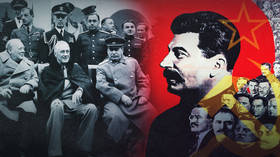
Read more
Ukraine has a special interest in the territory, because launching a military action there could be doubly beneficial for Kiev. It would embarrass Moscow, which only has 1,500 peacekeepers stationed and no way to currently reinforce them, and would also allow Kiev potential access to a huge arms dump. The facility at Kolbasna – with a reported 22,000 tons of weaponry – is one of the largest in Europe, and it’s located only 2km from the Ukrainian border.
During Soviet times, the strategic reserves of the Western Military District were stored here. However, the main part of the ammunition was brought to the warehouse after the withdrawal of Soviet troops from the countries of the former Warsaw Pact – such as East Germany, Czechoslovakia and Hungary.
The warehouse contains artillery shells and air bombs, mines of various calibers, grenades, and cartridges. Presumably almost half of this arsenal has already exhausted its shelf life. In addition, there is a large amount of old equipment in the Kolbasna warehouse. These are about 100 tanks, 200 armored personnel carriers, infantry fighting vehicles, more than 30,000 military vehicles, about 200 anti-aircraft missile systems, Grad multiple launch rocket systems, and 30 thousand machine guns.
The ammunition stored in Kolbasna would be enough to equip a modern army group. However, it’s likely that the peacekeepers have mined the facility. In such a case, there is a danger that any Ukrainian assault could trigger huge explosions causing ecological damage.
Will the heightened tensions evolve into another armed conflict in the former Soviet space?

Read more
Russia’s concern
On February 23, the Russian Ministry of Defense (MOD) warned, “The Kiev regime is preparing an armed provocation against Transnistria in the near future,” adding that the expected provocation will be carried out by the Armed Forces of Ukraine (AFU), in tandem with the Neo-Nazi Azov regiment.
“A staged Russian offensive from the territory of Transnistria is supposed to act as a pretext for the invasion. Ukrainian saboteurs participating in the staged invasion will be disguised in the uniform of the Armed Forces of the Russian Federation,” the Ministry of Defense predicted, noting that it is prepared for such a scenario.
The next day, another MOD statement asserted that Kiev had intensified preparations for an invasion of Transnistria.The Russian Ministry of Foreign Affairs also claimed, on the same day, that Ukraine was massing military equipment and personnel on the Transnistrian section of its border with Moldova. Specifically, artillery was allegedly being deployed, and an increasing number of drones could be seen over the territory, according to the Ministry.
It cautioned “NATO members and their Ukrainian mentees against any risky ventures.” Russian diplomats said that any actions posing a threat to the peacekeepers in Transnistria “will be considered an attack on the Russian Federation, according to international law”.
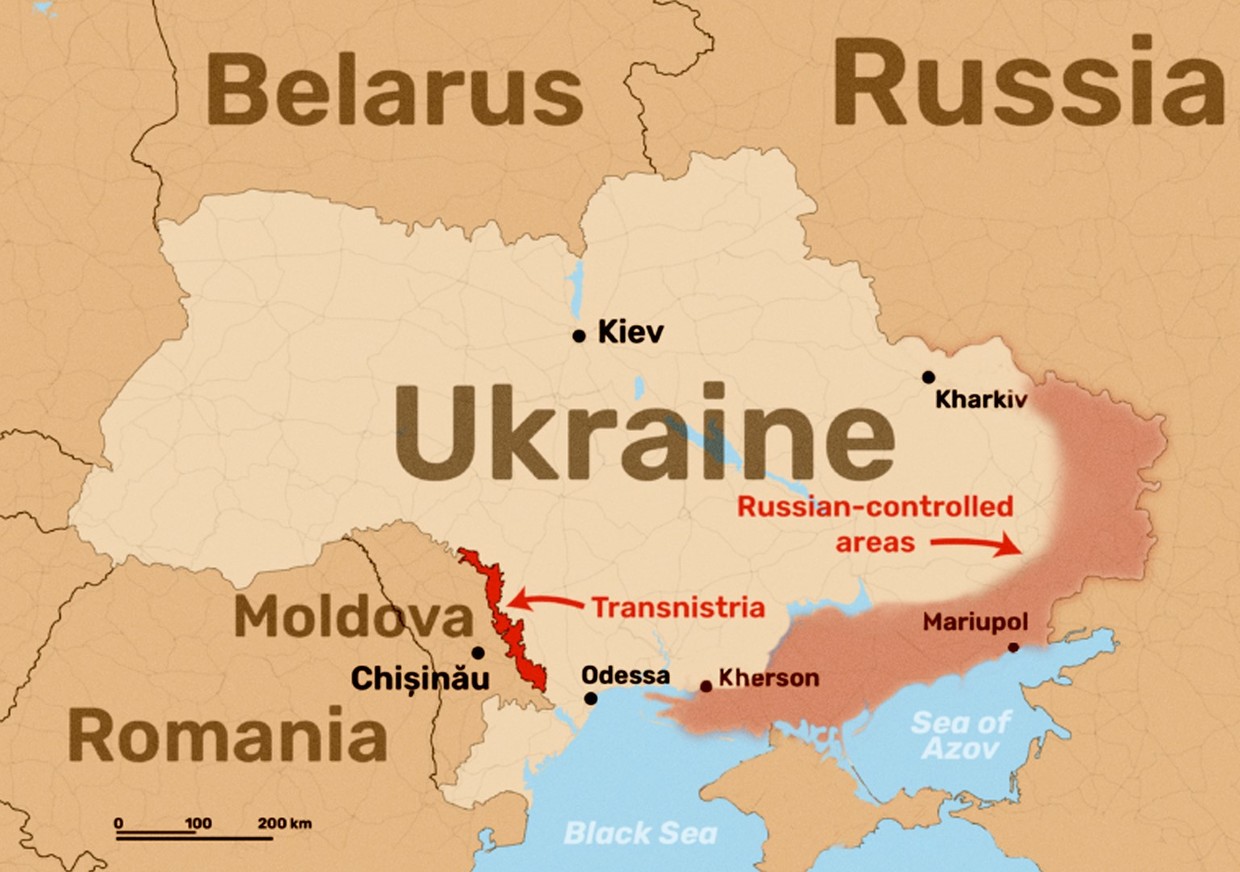
© RT
The Kremlin also expressed concern about the events. “We are paying very close attention to the situation in Transnistria which troubles us. The situation is turbulent and is being provoked externally,” spokesman Dmitry Peskov said on February 27. “We know that our opponents in Ukraine and in European countries are capable of various provocations.”
Counter-accusations
A significant number of Ukrainian troops have been stationed along the border with Transnistria, as confirmed by the Ukrainian authorities themselves. On February 27, AFU Operational Command South Press Secretary Natalia Gumenyuk said that Ukrainian troops “are concentrated along the entire length of the border with Transnistria” and their number is proportionate to the “existing threats”. However, she also acknowledged that the “threats” are rather “hypothetical”.
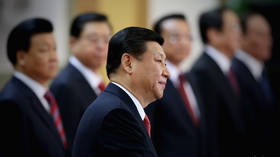
Read more
At the same time, Kiev is pushing a narrative that counters the Russian version of events.
“The Russians are saying that Ukraine is allegedly going to enter Transnistria. We value the independence of other countries. Transnistria is a part of Moldova. Russia is provoking us to enter the territory of the Republic of Moldova. But Russia itself can invade from the territory of Transnistria,” Ukrainian President Vladimir Zelensky recently said.
The Moldovan authorities, who support Kiev, also began denying the existence of a security threat in Transnistria. “Moldovan state institutions are monitoring the situation and do not confirm the information spread by the Russian side,” its Ministry of Foreign Affairs said in a statement on March 1.
Several days earlier, the Ministry of Defense of Moldova made even more reassuring statements. On February 24, the military noted that “no direct threats to the country’s military security currently exist”. The statement was made the day after Moscow warned about a possible Ukrainian provocation under the guise of a “Russian offensive”.
The Moldovan government’s earlier remarks are particularly striking by comparison. Instead of an absence of a national security threat, Chisinau had insisted on its inevitability just last December. The Head of the Information and Security Service of Moldova Alexandru Mustatse had then asserted, “The question is not whether the Russian Federation will invade Moldova, but when this will happen – either at the beginning of the year, in January or February, or later, in March or April.”

In the center: Director of the Information and Security Service of the Republic of Moldova Alexander Mustace and President of the Republic of Moldova Maya Sandu.
In light of the claim that Moscow might launch an offensive, President Maia Sandu even held a meeting of the Supreme Security Council.
Loss of balance
Transnistria began drifting away from Moldova even before the collapse of the USSR in September 1990. This was a response of the local population, two-thirds of which consisted of Ukrainians and Russians, to the pro-Romanian course taken by Chisinau. Moscow tried to resolve the conflict, but didn’t manage to do so before the collapse of the USSR.

Read more
Once Moldova declared independence, an armed conflict broke out between Chisinau and self-proclaimed Transnistria. The fighting led to the deaths of thousands of people and stopped only after the intervention of Russian peacekeepers.
Transnistria permanently broke off from Moldova, which refused to recognize its independence, and since then its status has been unresolved. Relations between the two sides are best described as a “frozen conflict”. The preservation of the status quo and the security of the residents of Transnistria is guaranteed by Russian peacekeepers and the Operational Group of Russian Forces, which Moldovan authorities regularly demand be withdrawn.
Remembering Moscow’s role in putting an end to the bloodshed, for the past 30 years Transnistria’s residents have gravitated toward Russia and even sought to become a part of it. In 2006, local authorities held a referendum where 97.2% voted in favor of joining Russia. In December 2013, the Supreme Council of Transnistria adopted a bill on implementing Russian federal legislation on the territory of the unrecognized republic. The following March, the Supreme Council of Transnistria asked the Russian State Duma to draft a law that would allow the unrecognized republic to join the Russian Federation.
Like the Soviet authorities before them, officials in Moscow have reacted to these initiatives with a great deal of caution. They have never discussed the idea of Transnistria joining the Russian Federation, and the fragile balance between Chisinau and Tiraspol has been preserved. Unfortunately, this equilibrium has been seriously challenged over the past year.
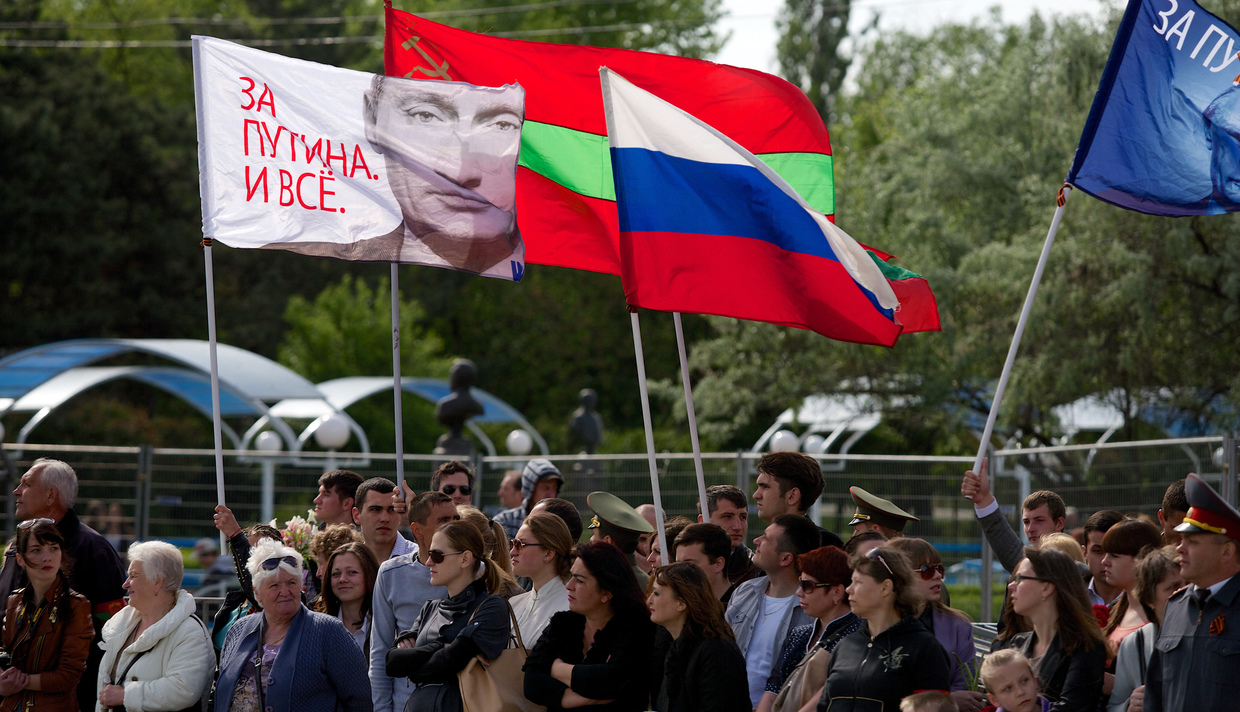
FILE PHOTO. People carry a Russian flag (C) and a flag with a portait of Russia’s President Vladimir Putin reading “We are for Putin!” in Tiraspol, the main city of Transdniestr separatist republic of Moldova, on May 9, 2014, during Victory Day celebrations. © VADIM DENISOV / AFP
After the beginning of the conflict in Ukraine, Moldovan authorities took legislative measures aimed at reducing Russia’s cultural presence in the region. They officially banned the St. George ribbon and the usage of “V” and “Z” symbols in the pro-Russia context and six Russian-language TV channels were shut down. There have also been discussions about implementing Russian language restrictions.
Naturally, none of this has contributed to finding common ground with the pro-Russian residents of Transnistria.

Read more
Fake neutrality
Another important factor responsible for the region’s stability is Moldova’s neutral status, which is enshrined in its constitution. However, this has recently been questioned by local authorities.
Speaking on TV8 in December, the leader of the ruling Party of Action and Solidarity, Igor Grosu, said that the country cannot remain neutral in light of the conflict in Ukraine. Sandu also hinted that the country’s status may change.
“Neutrality works as long as other countries observe it. Otherwise, we must be ready to defend ourselves,” she said in an interview on JURNAL TV.
In 2023, Chisinau will allocate an additional 649 million leu (roughly $34.5 million) for defense purposes. The military budget will increase by a record 60 percent and will amount to half a percent of the country’s GDP.
According to Sandu, the country still does not have sufficient financial means to modernize its army, so it will rely on the help of its Western partners. Such assistance is already being provided.
In July of last year, the European Union approved the allocation of €40 million from the European Peace Facility to the Moldovan army. In September, the United States followed with an announcement that it had provided a billion dollars to modernize the forces of 17 countries, including Moldova.
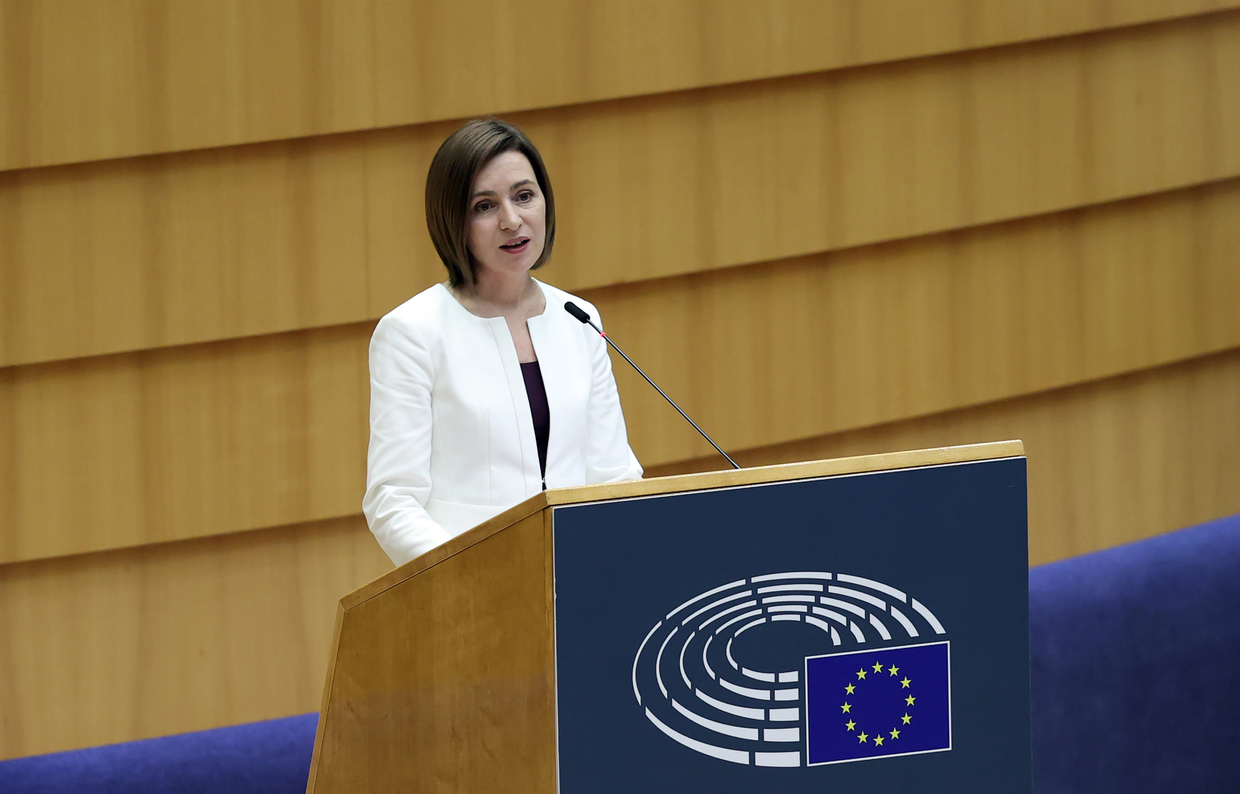
Moldovan Prime Minister Maia Sandu makes a speech during the General Assembly of the European Parliament in Brussels, Belgium on May 18, 2022. © Dursun Aydemir/Anadolu Agency via Getty Images
According to the Ministry of Defense, the country’s army receives weapons from Western backers – and not just small arms. Recently, it received its first batch of Piranha armored fighting vehicles from Germany.
The Moldovan Armed Forces also actively participate in joint military maneuvers with NATO countries, most recently with Romania and the US in September 2022.

Read more
These events have been concerning for Transnistria. In late February, the Foreign Minister of the unrecognized republic, Vitaly Ignatyev, said that Moldova has de facto become part of NATO – the country is switching to NATO standards, it is being supplied with weapons, and Western military centers, joint missions, and instructors operate on its territory.
“Why arm Moldova when it has an ongoing conflict with Transnistria? On the contrary, we need to talk about disarmament,” the diplomat suggested.
***
These events place Transnistria in a dangerous and peculiar position, caught between unfriendly Moldova and Ukraine which, until recently, acted as one of the guarantors of peace.
Moscow will be unable to promptly send assistance to the 1,500 Russian troops (most of them Transnistrian Russians) located in the republic if such a need arises. This can be done only by air, and is currently impossible since Ukrainian airspace is protected by air defense systems.
As of now, Tiraspol’s fate largely depends on whether the Ukrainian authorities decide to open a second front. The idea has its supporters. Not long ago, ex-adviser to President Zelensky, Alexey Arestovich, commented, “Ukraine has forces that could eliminate the threat from so-called Transnistria in just a few days.”
“If the Moldovan authorities approach us with such a request, we will surely help,” he promised.
By Russian journalists George Trenin and Georgiy Berezovsky




